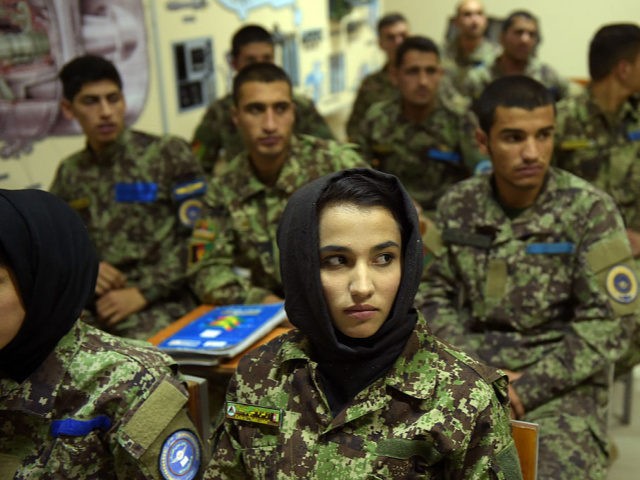The United States military “disbanded” a United States-based Afghan pilot training program after over 40 percent of the trainees went absent without leave (AWOL), the U.S. Special Inspector General for Afghanistan Reconstruction (SIGAR), a watchdog agency, revealed this week.
Although SIGAR did not provide updated data on if U.S. authorities captured the AWOL pilots, the watchdog agency reported in October 2017:
We found that nearly half of all foreign military trainees that went AWOL while training in the United States since 2005 were from Afghanistan (152 of 320). Of the 152 AWOL Afghan trainees, 83 either fled the United States after going AWOL or remain unaccounted for.
At the time, the watchdog agency deemed the unaccounted Afghan service members to be “high-risk.”
SIGAR’s latest quarterly report (January 1 to March 31, 2019) to Congress covers the training program involving the AC-208 Combat Caravan, a light attack combat aircraft.
John Sopko, the SIGAR chief, reported on May 1:
The AC-208 pilot training classes that were underway in the United States were disbanded due to the number of trainees who were going absent without leave (AWOL).
Those students that did not go AWOL were pulled back to Afghanistan to complete their training: as a result, only one class graduated from the U.S.-based program.
The second and third classes will continue and finish their training in Afghanistan. [NATO/U.S.-led Train, Advise, and Assist Commands] TAAC-Air has a plan to continue the student training and is developing a contract solution to support the effort to train the initial group of AC-208 aircrew. TAAC-Air said the C-208 trainees continue to progress to a self-sustaining level of proficiency.
“Over 40% of the AAF [Afghanistan Air Force] students enrolled in the U.S.-based training went AWOL,” the watchdog agency added, without providing a specific count for the number of pilots who went missing.
In 2016, Reuters learned from the Pentagon that at least 44 members of the Afghan National Defense and Security Forces (ANDSF), which includes police and military units, had gone AWOL since January 2015, while training in the United States.
Afghan troops have gone missing on U.S. soil “presumably in an effort to live and work illegally in America,” Reuters pointed out, citing the Pentagon.
This week, SIGAR told the Air Force Times that the AC-2018 training took place at Fort Worth, Texas.
“Northrop Grumman operates a 5,000 square-foot custom-built classroom space located at Meacham Airport in Fort Worth,” the news outlet noted.
The Immigration and Customs Enforcement (ICE) agency charged with efforts to locate the missing Afghans after they are reported missing, “did not immediately respond to a request for comment,” the Air Force Times pointed out.
ICE is a component of the U.S. Department of Homeland Security (DHS).
The phenomenon of Afghan troops deserting while training in the United States is neither new nor limited to the war-ravaged nation’s air force.
Breitbart News has reported on several cases involving ANDSF members who deserted while on training in the United States.
The United States has granted asylum to at least two of those Afghan service members, including one apprehended trying to sneak into Canada and the first female Afghan pilot.
“It is not uncommon for Afghans to go AWOL while training in the U.S., with many claiming asylum after being apprehended,” Air Force Times noted.
Taliban jihadists have infiltrated the Afghan security forces.
Although the United States has devoted the vast majority (over $83 billion) of its $133 billion nation-building effort to developing and training the ANDSF, the force continues to suffer from capability lapses and remains unable to operate independent of American military assistance, SIGAR determined.
SIGAR highlighted the ANDSF capabilities in its 2019 annual list of high-risk threats to America’s failed reconstruction efforts in Afghanistan.
The Afghan Air Force, however, is considered one of the most effective ANDSF branches.
Nevertheless, early this year, a SIGAR audit found that “it is unlikely that there will be enough pilots trained” before the Pentagon delivers 159 state-of-the-art Black Hawk helicopters as part of efforts to address capability gaps.
SIGAR determined that the Pentagon is at risk of mismanaging the helicopter delivery program, estimated to cost between $5.75 and $7 billion, a figure that covers procuring and sustaining the aircraft as well as training pilots and crew-members.
The U.S. Department of Defense (DOD) “runs the risk that the aircraft it delivers will sit idle in Afghanistan without enough pilots to fly them. Furthermore, DOD does not currently have a program in place to train Afghan personnel to maintain” the UH-60 Black Hawks,” Sopko wrote.
Days before the release of the latest quarterly report, Sopko complained that, under U.S. President Donald Trump, “Almost every indicia, metric for success or failure is now classified or nonexistent. Over time, it’s been classified, or it’s no longer being collected.”
Classification of data made public by SIGAR began under the previous administration, but has intensified under Trump, Sopko indicated.

COMMENTS
Please let us know if you're having issues with commenting.